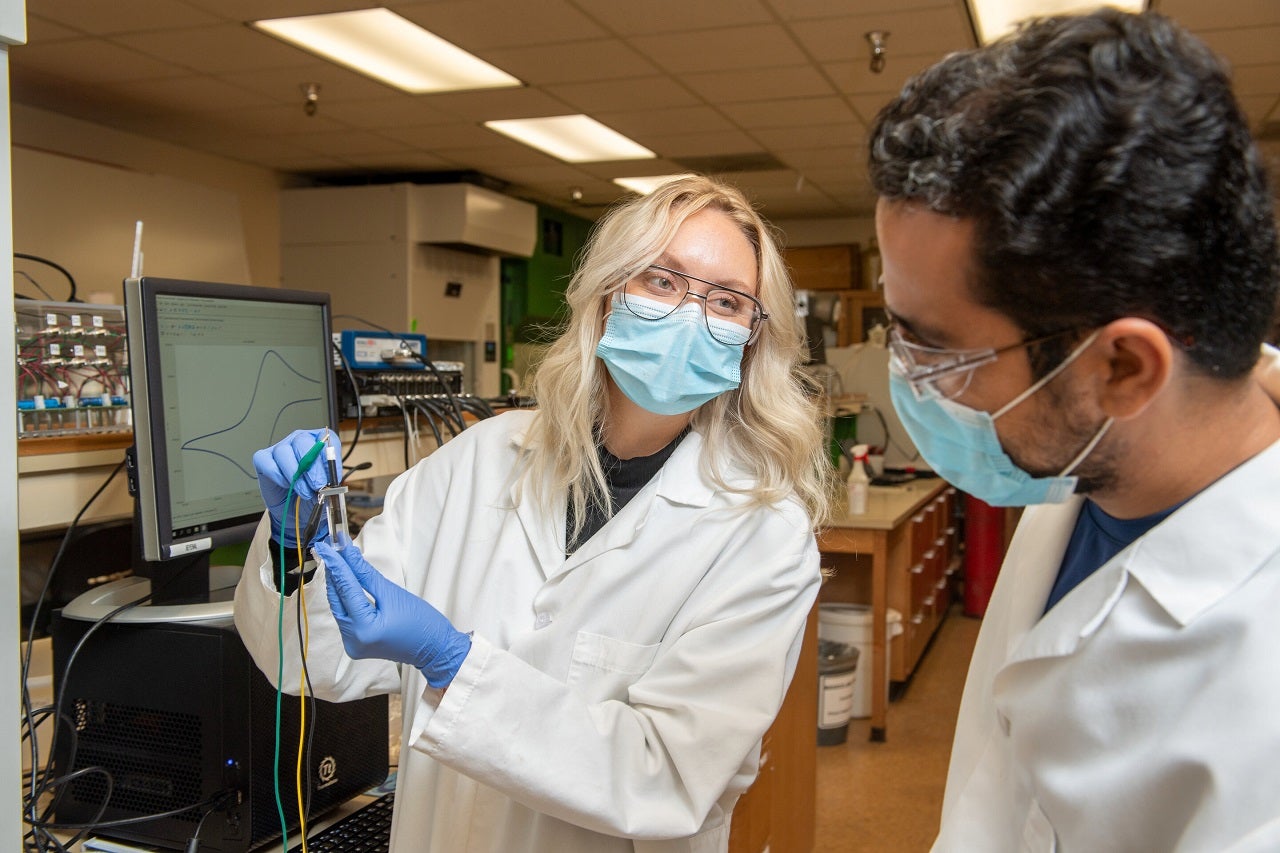
When a doctor is treating a patient who has a life-threatening bacterial infection, it can be hard to know which antibiotics to use to treat them. Antimicrobial resistance (AMR) is steadily increasing worldwide and could eventually make it difficult or even impossible to treat many common infectious diseases.
Determining which antibiotics to which a particular infection may have become resistant involves separating and growing the bacteria in a lab, in a process that can take up to two days or sometimes even longer. When a patient is severely ill, this amount of time is a luxury doctors cannot afford, meaning they often have to make their best guess about which antibiotic to prescribe without having a full grasp on how well it will work.
Now, a test which measures the electrochemical activity of bacteria could soon be joining clinicians’ arsenal in the fight against AMR.
Researchers at Washington State University have developed a technique to measure the metabolic activity of bacteria using an electric probe. The test can identify antibiotic resistance in less than 90 minutes, where current techniques involving bacterial cultures can take up to two days. The results of their study have now been published in Biosensors and Bioelectronics.
“In a patient with sepsis, you’d do a blood culture to isolate the organism and figure out what it’s resistant to,” says Washington State University professor of molecular epidemiology Douglas Call. “Once you have the isolate, that could take anywhere from ten hours to two to three days. If you’re a physician and you’re able to have some information back within a few hours during your shift, it gives you an opportunity to make decisions in near real time.
“The last thing you want to do is treat with an inappropriate antibiotic. The patient won’t respond and could actually get worse.”
How does the AMR test work?
The test uses a probe to directly measure the electrochemical signal of the bacteria, thus calculating its metabolism and respiration long before this would be possible using a traditional culture.
“When bacteria break down, they release electrons just like our cells do,” says Call. “We have an electron transporter that grabs a hold of the electron and then it diffuses to an electrode. That movement of the electron to the electrode causes an electric current that we can measure.”
A chemical mediator was added to the assay to act as a catalyst, taking electrons from the surface proteins of the bacteria and moving them to the researcher’s electrode where the electric signal could then be measured. Bacteria that are still metabolising after antibiotic treatment are considered resistant to the drugs.
The researchers tested four bacterial species associated with hospital-acquired infections – Acinetobacter baumannii, Staphylococcus aureus, Escherichia coli, and Klebsiella – in conjunction with four different antibiotics: ciprofloxacin, imipenem, oxacillin and tobramycin.
Call says: “If you have a culture of cells and they’re still respiring in the presence of an antibiotic we’ll see a higher level of current than cells that are unhappy, dead, dying or simply can’t do anything because of the antibiotic and are sitting there in a fairly static state.”
Alongside this, the researchers have developed an antibiotic susceptibility index algorithm to categorise the results and help clinicians interpret when there is resistance and decide what antibiotic to use.
The team is looking to engineer their probe to be convenient and standardised for clinicians, and hope to commercialise it.
“Commercialisation can come in a couple of different ways,” says Call. “The institution may license it to a large company. We could try to start a company or begin working directly with a company using some of their resources. It’s under discussion right now.”
The fight against AMR
The last class of antibiotics to be successfully introduced as a treatment was adapted in 1987, and antibiotic drugs can take ten years or more to develop. Pharmaceutical companies rarely gravitate toward this class of research due to the associated expense and risk, but the lack of new antibiotics is a growing problem.
But tests to try and ascertain the antibiotic resistance of an infection aren’t the only option left in the fight against AMR. Several companies are focused on developing novel biotheraputics which could destroy even the most resilient bacterial infections.
Australian biotech firm Recce, for example, is working on developing a synthetic broad-spectrum antibiotic that uses a hydrophobic reaction to bind to the outer membrane of an infectious bacterium. This weakens the cell wall and causes internal pressure inside the bacterium to build, eventually causing it to explode. The body’s natural immune system can then clear away the remaining debris.
Bacteriophages are another option – viruses that can infect and kill off bacteria, while leaving healthy cells unharmed. Bacteriophages were first discovered in 1915 and began to be commercialised in 1940, but interest in these therapies waned following the introduction of antibiotics.
Felix Biotechnology started a double-blind, placebo-controlled clinical trial in 36 patients in January, using the targeted phage therapy YPT-01 to treat chronic P. aeruginosa infections in patients with cystic fibrosis. People with cystic fibrosis tend to require repeat antibiotic treatment to combat lung infections, which can gradually become chronic and multi-drug resistant over time.
“We know that pathogens evolve resistance to any antibiotic or therapy we use, so our approach turns that to our advantage,” said Felix co-founder Dr Paul Turner. “By targeting phage to mechanisms of virulence, we ensure that if pathogens evolve resistance to phage, they lose traits that make them effective pathogens, putting them in an evolutionary Catch-22.”
As overuse of antibiotics in agriculture, over-prescribing and poor patient adherence continue, dangerous pathogens will continue to mutate and develop resistance to these drugs due to repeat exposure. In the fight against AMR, it’s critical that the healthcare community – from diagnostic developers and medtech firms to biotech and big pharma – acts sooner rather than later.



